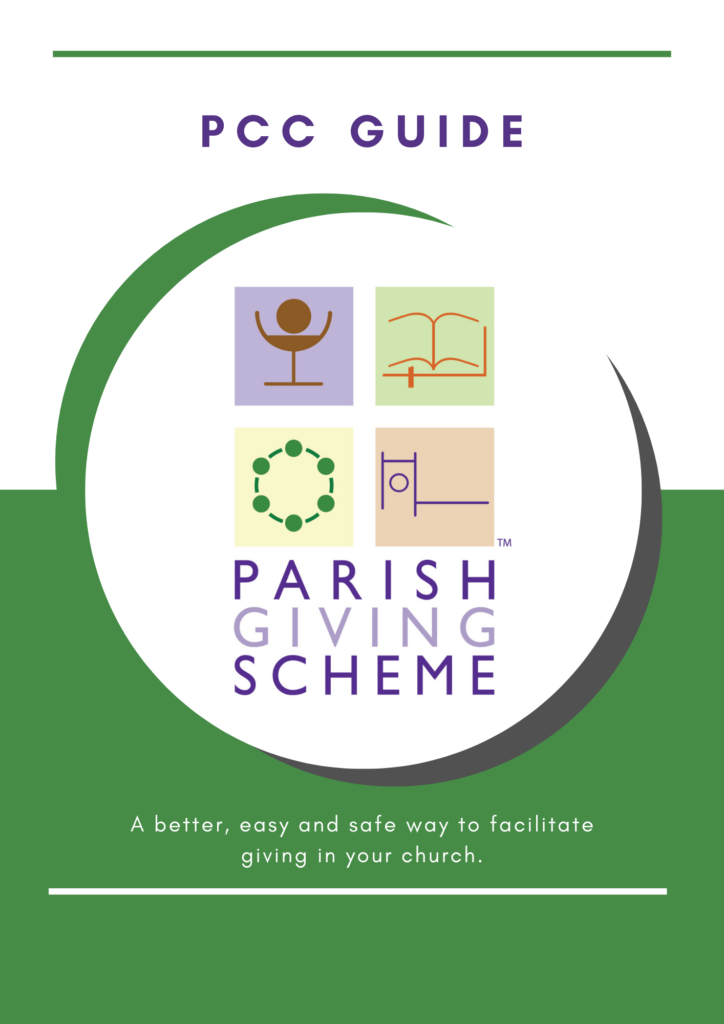
Mechanisms, Impact, Need and Trust
The average weekly gift in the Diocese of York is £12.30; this rises to £16.38 with the Parish Giving Scheme.
We can help our church to maximise gifts to support its ministry and mission from 3 main sources: regular giving, irregular giving and visitor giving.
If you are looking to the first of these – please look at the section on The Parish Giving Scheme which has been running since 2016 with the vision to advance regular giving in every church.
With the other two, you might want to look at contactless units, or QR codes if your mobile signal is not as strong, to allow those who do not attend your church to make a cashless donation.
We can support you with how to check your connectivity, as well as advice on which unit might work best, or creating materials for you.
Mechanisms of Giving
When encouraging people to give we need to provide the right mechanisms if they are to be generous. The easier it is to give, and the more ways we offer to give, the more likely people are to give.
Would you like to know more about The Parish Giving Scheme?
The Parish Giving Scheme (PGS) is set up with the aim of supporting churches for free. Donations through this Scheme are made by Direct Debit, and can be given on a monthly, quarterly or annual basis. Each donation is directed to that individual’s parish church, and PGS claims the Gift Aid on your behalf.
Registering your Parish
The Parish Giving Scheme is available across the Diocese of York from June 2020, and so from now any parish can register and promote the Scheme to your community. To be a part of the Scheme, your PCC must first agree to register for the Scheme, and complete a Registration Form:
- if you are a single-church parish, please complete the form which can be downloaded here
- if you are a multi-church parish, please complete this form which can downloaded here.
Once you have completed your Registration Form, you will need to send it along with a paying in slip to your Diocesan Giving Officer.


Would you like to know more about contactless units?
Why are contactless giving units needed?
In an increasingly cashless society, donating by contactless units has become the most common way offer one-off giving facilities in our churches. Contactless units can be expensive to buy, but will enable donations you wouldn’t otherwise have received, and so are worth the initial outlay in cost.
What units are available?
Parish Buying has a list of recommended units which are suited to churches, which can be found here. There are many options, from the small device to help with taking payments at a church shop or cafe through to units that can even take payments in areas where there is no mobile or Wi-Fi signal. The best way to decide which unit is more suited to your church is by looking through the ‘Top Tips’ suggestions below.
What if we need some advice?
Our Diocesan Giving Advisers are very happy to help you decide which giving unit is more suited to your church, as well as advice on how best to promote it.
Try before you buy
We have a CollecTin More available for short time hire for those churches who have WiFi. If you have a mobile signal, you could look at hotspotting a mobile phone to make it work.
If you are interested in trying before you buy – please click below.
Would you like to know more about QR codes?
Here’s an inexpensive, versatile, and easy set-up option to start accepting contactless giving from smartphone users in your church. A QR code (QR = Quick Response) is a unique code made up of small black and white squares that can be read by the camera or a QR code reader on a smartphone, taking the user to a pre-chosen webpage. QR codes can be printed onto anything, such as a notice sheets, orders of service, parish magazine, poster, banner or welcome card. By linking QR codes to donation webpages, we allow the individual to give wherever they are.
Why get a QR code?
- It costs nothing to create and use
- It’s easy to add to printed material – if you would like support with creating your materials, do get in touch with the Team.
- Once you have one, it’s really useful for giving within worship, for occasional offices and visitors
- People are used to seeing and using QR codes, and generally are carrying less cash
- It allows people without cash to give to your church
Where can I get a QR code from?
There are two main sites that we promote to create QR codes, and, although many other exist, it is worth checking out the transaction costs as these can vary considerably.
QR codes: PGS
With the Parish Giving Scheme now offering an online platform, Statement Receivers can download a free QR code from the website. This QR code will take any person directly to that church’s PGS landing page, allowing them to give very simply without friction.
QR codes for PGS are really good for attracting one-off gifts, and are therefore useful to be placed on posters, in parish magazines and on pew cards or postcards for visitors to take with them. PGS, which is free for regular givers, do have a 1.5% transaction fee for one-off gifts.
QR Codes: Give a little
The Church of England has a collection of recommended platforms which are safe and secure to use, and usually are able to gather Gift Aid declarations – the most popular of these is Give a Little, which has the lowest transaction rate at 1.1%.
Once registered, Give a Little – and other platforms – allow you to download a free QR code to promote one-off giving. As this is promoting one-off giving, these are great for Gift Days, orders of service for occasional offices, posters and welcome cards.
Would you like to know more about easyfundraising?
How does easyfundraising work?
When anyone connected to your church uses the easyfundraising website or app to shop online with over 6,000 well-known stores, the retailer they shop with donates to your church. It’s completely free to use, and it won’t cost your community anything extra as the retailer funds the donations, not the shopper. Your community also won’t need to change where they shop either as many favourite retailers are included – Amazon, M&S, Eden, eBay, Argos, John Lewis, Dobies, Waitrose, Holland & Barratt, Boots, and many more.
The benefits:
- Free to register and use
- Easy to set up and requires minimal management or upkeep
- Supports generous giving all year round to diversify your church’s income
- Free coaching calls with the friendly easyfundraising team to help get you started
- A wealth of free assets, flyers, toolkits, pre-built social media messages, and more to engage your congregation
How to get started
To get started now, simply register your church as a good cause with easyfundraising – it’s completely free to register and use and only takes a couple of minutes.
Impact reporting
To encourage people to give, we need to explain what will change if they do give, and that’s impact. When we try and encourage giving we often talk about costs, but that can be pretty dry and often makes people think their giving is insignificant in comparison to the overall costs of ministry and mission
Would you like to know more about communicating impact?
Good practice in impact reporting is showing consistently and creatively throughout the year what impact the church has made – during our services, in leaflets and newsletters and in social media stories. Remember to communicate your impact to both your church family and the wider community.
We have experience in creating leaflets, posters, postcards, for the running of giving programmes, all of which we are happy to share or create for your own programme.
If you would like to know more, or would like us to create materials for you, please get in touch with the Team.
Explaining Need
There are numerous worthy and deserving causes that need people’s support. If we are to encourage people to give to us, as churches we must explain why we need people’s support, and how vital it is to our ministry and mission.
Would you like to know more about explaining need?
Building Trust
Trust takes time and patience to build. It also takes energy and effort. We must explain how the money is spent, and what it achieves. We need to show that we spend money wisely and well, and that we spend people’s giving on the things that are important to our church and community.